I'm trying to implement image rectification. I was using a software which is not available anymore. To rectify the image, the software used the height of the camera (h), the distance of two points (d1, d2) from the camera and the correspond lines in the image to the reference points (Line1, Line2). So the variables are:
- h (camera elevation);
- Line1, Line2 (row pixel)
- d1, d2 (Distance in meters from the camera)
Configuration:

I tried to implement few code using OpenCV (Python) but the final result is not the same of the software. I wrote a code to calibrate the camera and a second to undistort the image and then I want to apply the rectification. The problem is that I'm using a single camera (take photos of a landscape) that is fixed with a fixed focal length and focus which I can't change anymore. Can someone tell me a good way to execute the rectification using the same way of the software or an another valid solution?
My code for the calibration is
# Numbers of corners
n_w = 9
n_h = 6
patternSize = (n_w, n_h)
# SIZE OF THE WINDOW TO IMPROVE THE COORDINATES OF CORNERS
windowSize = (11, 11)
# TERMINATION CRITERIA
criteria = (cv2.TERM_CRITERIA_EPS | cv2.TERM_CRITERIA_MAX_ITER, 30, 0.001)
objp = np.zeros((n_h * n_w, 3), dtype=np.float32)
objp[:, :2] = np.mgrid[0:n_w, 0:n_h].T.reshape(-1, 2)
# LIST OF POINT
objpoints = []
imgpoints = []
# GET ALL IMAGES
images = glob.glob('*.jpg')
for fname in images:
img = cv2.imread(fname)
# IMAGE ON GRAY SACLE
gray_img = cv2.cvtColor(img, cv2.COLOR_BGR2GRAY)
# fIND CORNERS
retval, corners = cv2.findChessboardCorners(gray_img, patternSize, None)
if retval == True:
print 'Looping through image %s' % fname
objpoints.append(objp)
cv2.cornerSubPix(gray_img, corners, windowSize, (-1, -1), criteria)
imgpoints.append(corners)
cv2.drawChessboardCorners(img, patternSize, corners, retval)
cv2.imshow('ChessBoard Image %s' % fname, img)
cv2.waitKey(500)
cv2.destroyAllWindows()
print "------START CALIBRATION....."
ret, cameraMatrix, distCoeffs, revcs, tvecs = cv2.calibrateCamera(objpoints, imgpoints, gray_img.shape[::-1],
None, None)
print ret
print cameraMatrix
print distCoeffs
print '---SAVING CALIBRATION DATA'
np.savez('calibration_data', RMS=ret, distCoeffs=distCoeffs, cameraMatrix=cameraMatrix)
if ret <= 1.0:
print '''-----GOOD CALIBRATION'''
The code to remove the distortion is:
# LOAD CALIBRATION DATA
calibrationData = np.load('calibration_data.npz')
distCoeffs = calibrationData['distCoeffs']
cameraMatrix = calibrationData['cameraMatrix']
calibrationData.close()
# LOAD IMAGES
images = glob.glob('/*.jpg')
for i, fname in enumerate(images):
img = cv2.imread(fname)
# UNDISTORT
undistorted_img = cv2.undistort(img, cameraMatrix, distCoeffs, None)
# SAVE IMAGE
cv2.imwrite(os.path.join(dirname, 'Undistorted_%05d.jpg' % i), undistorted_img)
cv2.imshow('Undistorted Image %s' % fname, undistorted_img)
The first idea to rectify the image was to find the 4 corners inside the real world image of a trapezoid (A4 paper) and compute a transformation matrix given 4 points of a rectangle (real dimension of an A4). But I think that is an wrong approce. To do this I wrote this code:
#load image
img_Trap = cv2.imread('image.png', cv2.IMREAD_GRAYSCALE)
#points on the image (corners of an A4 paper)
ptsTrap = np.array(((1556, 1050), (1556, 1050), (2189, 1677), (1425, 1723)), dtype=np.float32)
img_Rect = cv2.imread('image2.png', cv2.IMREAD_GRAYSCALE)
# corner of a A4 (saving the aspect ratio)
ptsRect = np.array(((1980, 1381), (2189, 1381), (2189, 1677), (1980, 1677)), dtype=np.float32)
#transformation matrix
T = cv2.getPerspectiveTransform(ptsTrap, ptsRect)
print T
# warp perspective
warp = cv2.warpPerspective(img_Trap, T, img_Rect.shape[:2])
cv2.imwrite('warpimage.png', warp)